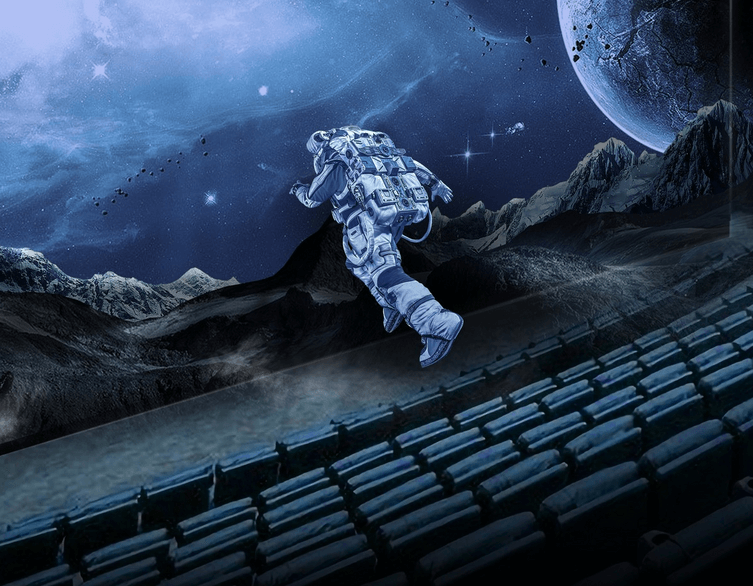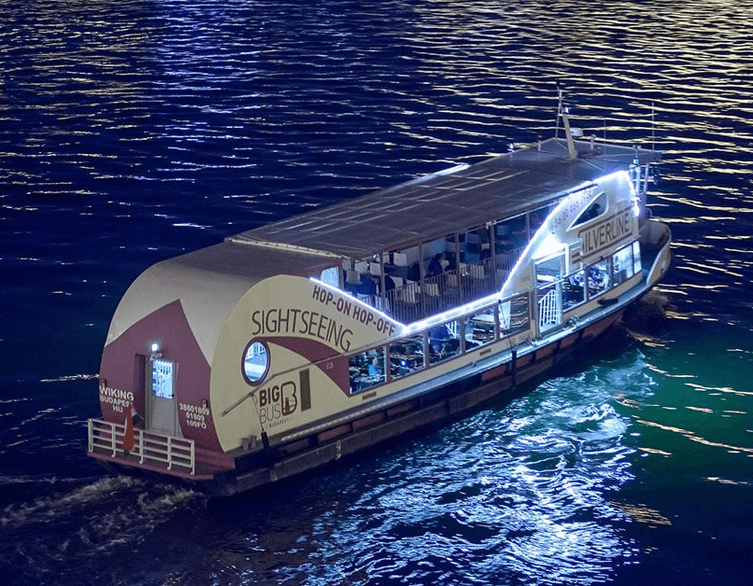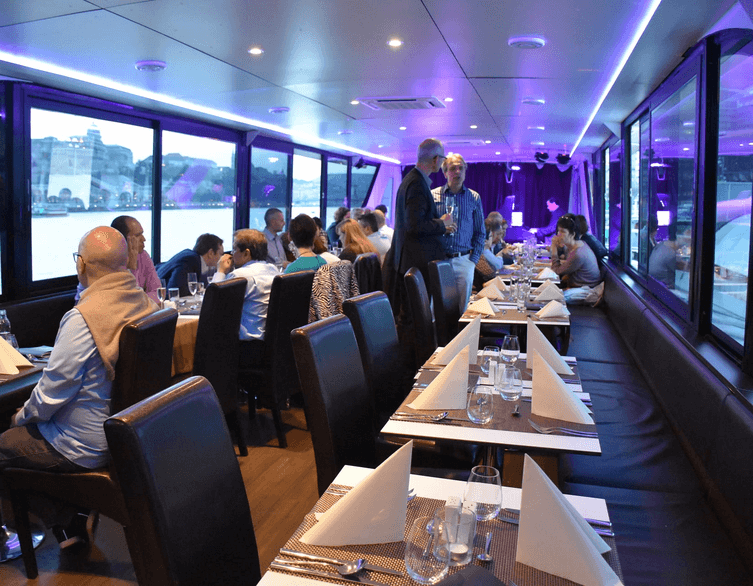Step Into the Future: Central Europe’s First LED Cinema Opens in Budapest

Budapest has just added another groundbreaking attraction to its cultural repertoire, and this one promises to revolutionize how you experience movies. The Kultik cinema network has unveiled Central and Eastern Europe’s first LED cinema in Csepel, Budapest’s 21st district, bringing cutting-edge technology that transforms film viewing into something you’ve genuinely never experienced before.
Beyond Traditional Cinema: Welcome to True Visual Magic
Imagine watching a movie where asteroids don’t just appear on screen—they hurtle toward you with such visceral intensity that you instinctively brace yourself in your seat. Picture scenes so immersive that a child’s thrown stone seems destined to hit you right between the eyes. This isn’t hyperbole or clever marketing speak. This is exactly what the new LED cinema delivers, and it represents a fundamental reimagining of what watching films can be.
Unlike conventional cinemas where projectors beam light onto screens, the Kultik Csepel LED auditorium displays movies on a massive nine-meter-wide HeyLED panel. This setup eliminates the traditional projector-film-screen combination entirely, replacing it with an independently illuminated LED wall containing over 2.2 million individual LED pixels. The result is picture quality that exceeds anything traditional cinema technology can achieve.
The Technology Behind the Wonder
The technical specifications might sound abstract until you see them in action. The LED screen measures nine meters wide and 4.5 meters high, assembled from one hundred panels that fit together seamlessly without any visible gaps. Each pixel functions independently, which means the screen can display true, deep black by completely switching off individual pixels while adjacent ones shine at maximum brightness. This creates contrast ratios that far surpass traditional cinema standards.
What makes this particularly remarkable for viewers is the absence of that grayish quality that plagues conventional cinema blacks. When a scene calls for darkness, you get genuine, inky blackness that makes bright elements pop with unprecedented intensity. Colors appear more vibrant, details emerge with stunning clarity, and the overall visual experience feels more lifelike than you’d expect from any screen.
The resolution sits at 2048×1024 pixels—what the industry calls 2K. While this might not sound impressive compared to your home television, the viewing distance and screen size combine perfectly to deliver sharp, detailed images. During test screenings, human faces displayed extraordinary detail, and fast-paced action sequences maintained their clarity without motion blur. The pixel grid only becomes noticeable during scenes with large, uniformly colored areas at high brightness, and even then, it’s subtle enough that most viewers won’t notice.
Three Dimensions Like Never Before
The real enchantment reveals itself during 3D screenings. Traditional 3D cinema often suffers from reduced brightness and detail loss, forcing you to watch dimmer, less crisp versions of films. The LED technology solves this problem completely. Three-dimensional scenes appear sharp, stable, and remarkably bright while maintaining their depth and detail.
Best deals of Budapest
The 3D effect itself reaches new levels of intensity. During demonstration screenings, a spaceship’s nose seemed to extend halfway into the auditorium toward viewers. Objects appear to float in space with convincing solidity, and the depth of field creates genuine immersion rather than the gimmicky effects that sometimes characterize 3D cinema.
This enhanced experience requires special active 3D glasses, which differ from the passive glasses used in other cinema halls. These specialized glasses, which cost tens of thousands of forints to manufacture, are provided to viewers before screenings and collected afterward. They contain small batteries and use infrared technology to synchronize with the LED panel, creating the optimal 3D effect. While they’re comfortable for the first couple of hours, contact lens wearers might find them easier to manage than those who already wear prescription glasses.
The Journey from Los Angeles to Csepel
The story behind this technological leap adds another layer of interest for visitors curious about Budapest’s innovative spirit. István Kalmár, owner of the entirely Hungarian Kultik cinema network, first encountered LED cinema technology during a visit to Los Angeles. Immediately recognizing its potential, he began negotiations to bring the experience home to Hungary.
Kultik specializes in reviving small cinemas in towns where theaters have closed or face closure, bringing high-quality movie experiences to local communities. They already operate successful cinemas in Sopron, Hódmezővásárhely, and Kaposvár. Through collaboration with the Indotek Group led by Dániel Jellinek, they relaunched the Csepel cinema and transformed its second auditorium into this technological showcase.
The entire process took considerable time and expertise. Planning required roughly one year, the actual installation of delivered panels took two days, and an additional week was needed for proper calibration to ensure optimal picture quality. The four-ton installation—including the LED panel itself, supporting structure, and front speakers—now stands as a testament to both technical ambition and successful execution.
More Than Just Movies
While film screenings form the core purpose of any cinema, the LED auditorium’s capabilities extend far beyond traditional movie viewing. The 150-seat venue has been specifically prepared to host esports events, concert broadcasts, and video game tournaments. During the grand opening, YouTuber Büki Dani demonstrated gaming on a PlayStation 5 connected to the massive LED screen, showcasing how impressively it handles video game graphics.
The auditorium can display content at up to 60 frames per second, making it ideal for fast-paced gaming content. The combination of the LED screen’s responsiveness, the venue’s advanced sound system featuring 19 speakers optimized for the space, and the comfortable seating creates an environment where gaming events can unfold with spectacular visual and audio quality.
Corporate events and conferences also find a natural home here. The LED technology allows for breathtakingly vivid business presentations, and the space can be configured for various professional gatherings. Private screenings for groups, parties, or special occasions can be arranged, offering an exclusive experience that goes far beyond typical venue rentals.
Finding LED Screenings and Planning Your Visit
The cinema is located in Csepel, which forms Budapest’s 21st district on the southern tip of Csepel Island in the Danube. While slightly off the central tourist trail, it’s easily accessible via public transportation, and the journey offers a glimpse of Budapest beyond its historic core.
When browsing the cinema’s schedule, films shown in the LED auditorium are clearly marked with the “HeyLED” designation next to screening times. The cinema prioritizes showing 3D films in this special venue first, giving audiences the chance to experience three-dimensional cinema at its absolute best. Currently, the cinema shows 3D content at 24 frames per second, though they plan to upgrade to 48 fps copies when available, which will make the experience even smoother and more immersive.
Ticket prices reflect the enhanced experience while remaining reasonable. Standard screenings throughout the cinema cost 2,900 forints, while LED auditorium tickets are priced at 3,700 forints—an additional 800 forints for access to this revolutionary technology. Given the significant upgrade in viewing quality, particularly for 3D films, many visitors find this modest premium worthwhile.
Sound That Matches the Vision
Visual brilliance means little without equally impressive audio, and the Kultik Csepel LED auditorium delivers on this front as well. The venue features VIVE technology, the same advanced sound system used in the network’s Kaposvár and Dunaújváros cinemas. This system ensures that regardless of where you sit in the auditorium, you experience identical audio quality and spatial effects.
The 19-speaker configuration creates enveloping soundscapes that complement the visual spectacle. During action sequences, sounds move through the space with precision, matching on-screen action perfectly. Quiet dialogue scenes maintain clarity without requiring uncomfortable volume levels. The overall effect reinforces the sense that you’re not merely watching a film but inhabiting its world.
Sustainability and Longevity
For environmentally conscious travelers, the LED cinema’s efficiency offers reassurance. Despite its massive size and impressive brightness, the system consumes only about 20 to 25 percent more power than traditional cinema projection systems under maximum load—roughly 3 kilowatt-hours. The LED panels generate surprisingly little heat, eliminating the need for additional cooling systems even in seats directly adjacent to the screen.
The manufacturer guarantees 100,000 hours of operation before brightness decreases to half its original level. The modular design means individual panels can be replaced if necessary, though operators don’t anticipate issues with pixels burning in or out. This longevity ensures the technology will serve Budapest audiences for many years to come.
What’s Coming Next
The success of Budapest’s LED cinema could spark further expansion. If the Csepel venue meets expectations, Kultik’s second LED cinema will likely open in Kaposvár. Meanwhile, LED cinema technology continues evolving worldwide. Four-thousand-resolution panels operating at 120 frames per second are already available, with the largest models reaching six times the size of the Csepel installation. As prices continue falling and technology advances, LED cinema may become increasingly common throughout Hungary and beyond.
Films currently showing or planned for the LED auditorium include major releases like Tron: Ares and the latest Avatar installment. The cinema also plans to screen the Depeche Mode concert film, demonstrating how music performances can benefit from the technology’s superior image quality and color reproduction.
An Experience Worth Seeking Out
For tourists visiting Budapest, the LED cinema represents more than just entertainment—it’s a glimpse into cinema’s future and evidence of Hungary’s embrace of cutting-edge technology. While Budapest rightfully celebrates its historic architecture, thermal baths, and cultural heritage, attractions like this demonstrate that the city continues evolving and innovating.
The journey to Csepel might take you away from central tourist areas, but that’s part of the appeal. You’ll see residential Budapest, experience local public transportation, and visit a shopping plaza where everyday Hungarians spend their leisure time. The cinema itself sits within this authentic context, offering both technological wonder and cultural immersion.
Whether you’re a film enthusiast eager to experience the latest in cinema technology, a family looking for unique entertainment during your Budapest visit, or simply someone curious about how innovation transforms traditional experiences, the LED cinema delivers something genuinely special. The combination of true black levels, extraordinary contrast, brilliant colors, and immersive 3D creates viewing experiences that simply cannot be replicated by conventional cinema or home viewing setups.
Book your tickets online before visiting to ensure you can experience films in the LED auditorium, particularly for popular 3D releases that showcase the technology’s full capabilities. The cinema operates in Hungarian, though film screenings typically feature original language audio with Hungarian subtitles for international releases, making them accessible to English-speaking visitors.
Budapest’s first LED cinema isn’t just another attraction to check off your itinerary—it’s an invitation to see how technology can enhance and transform art, creating experiences that genuinely deserve the overused descriptor “unmissable.” In a city famous for looking backward to its imperial past, this cinema points firmly toward the future, and that future looks spectacular.



















